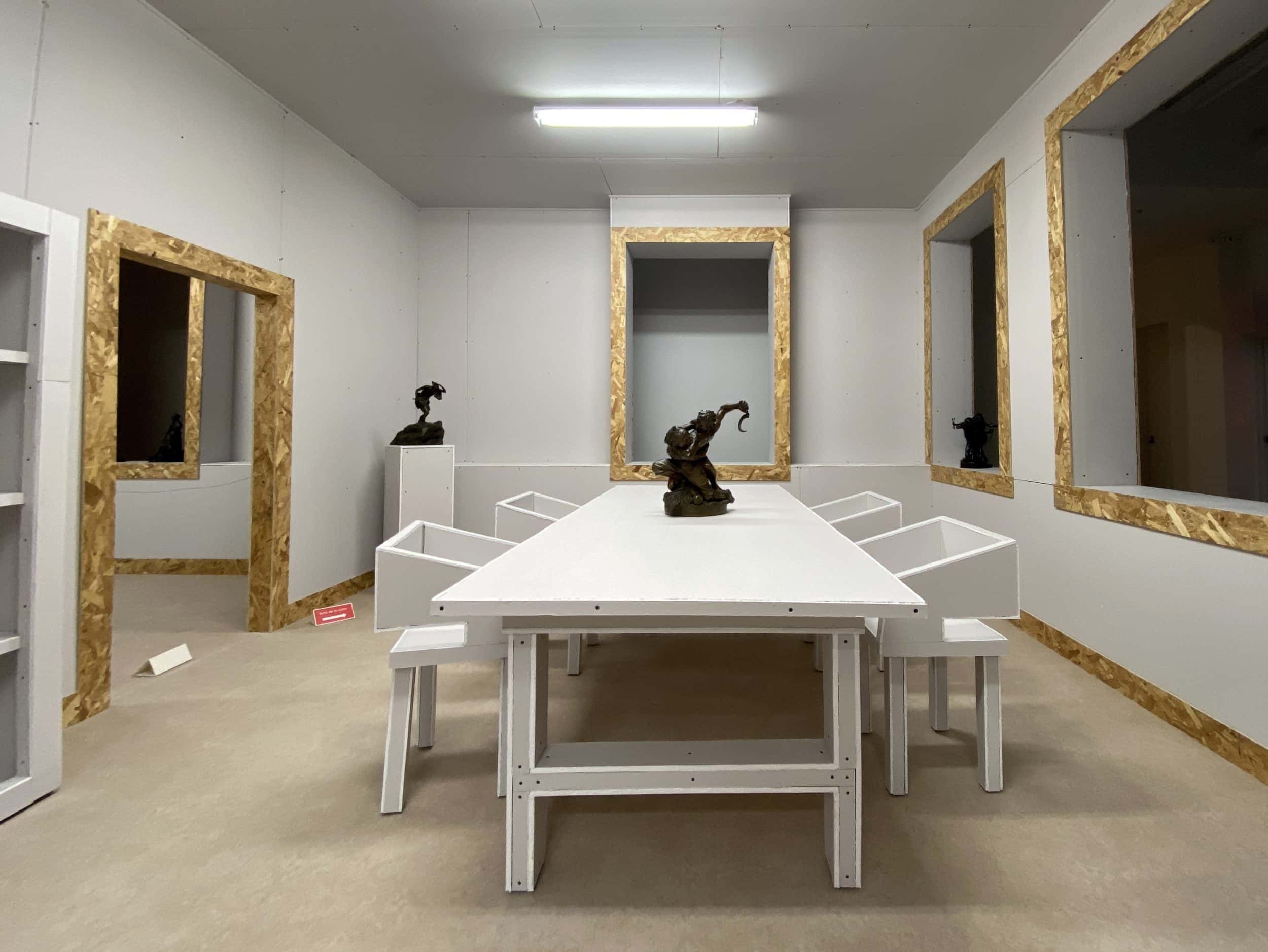About —
The text “In Dialogue” is an overview of the programming season at the Musée d’art de Joliette.
A recent issue of the art journal esse art + opinion raised the question of different forms of appropriation by focusing on the shared and distinct qualities of, respectively, cultural appropriation and artistic appropriation, a trend that was popularized in the 1960s. Notions of context, ownership, and authority are central to defining the act of appropriation and its consequences: it is a matter of borrowing, usurping, or copying an image or an object that does not belong to us, doing so without permission, in order to use it in a context other than the one for which it was originally intended. In their respective galleries, Joseph Tisiga and Nicolas Fleming have both imagined installations that prompt us to consider the role played by presentational context in reflecting an object’s artistic and cultural value.
Bronze sculptures produced at the turn of the 20th century by Louis-Philippe Hébert, Alfred Laliberté, and Marc-Aurèle de Foy Suzor-Coté are here presented by Nicolas Fleming within a replica of one of the most beautiful old bourgeois homes in Saint-Charles-Borromée. This contextualizing gesture reminds us that art was then linked to social standing and that these works had first been conceived to please the tastes of the day and to adorn the sumptuous interiors of private residences. Appropriation often goes hand in hand with a simplification of an initially complex subject, which becomes an archetype that risks slipping into stereotype. These sculptures are examples of it; they are a romantic representation of an Indigenous reality that the artists did not know firsthand, or of a rural world of which they sensed, nostalgically, the looming disappearance. Fleming’s work, which replicates only the skeleton of Maison Antoine-Lacombe, thus suggests that the work of interrogation and revision is an on-going endeavour, since the values that motivate our actions, colour our point of view, influence our thought patterns, change over time.
Joseph Tisiga, for his part, went to the Westbank First Nation Sncewips Heritage Museum, in British Columbia, to borrow heritage material produced by Oliver Jackson, an English immigrant from Norfolk who came to Canada in the 1920s. To create his garments, objects, sculptures, and masks, Jackson drew freely from several Indigenous cultures at a time when the Indian Act outlawed traditional Potlach ceremonies, leading to the confiscation of Indigenous goods and a decrease in their production. Appropriation is also an act of power: it highlights an inequable and asymmetric relationship between the dominated and the dominant, between those who have rights and those who do not, those who have a say and those who are summoned to keep silent. While the amateur artist never suggested that he had produced authentic creations, his objects, paradoxically, could be useful in a teaching environment—the reason for which they had been accepted at the museum. Raised first in Alberta and then in the Yukon, in a context that did not particularly encourage Kaska Dena culture, Tisiga only took an interest in it toward the end of his adolescence. With this installation, he makes a connection with his own experience of acculturation by asking the question: how does one connect with one’s history, one’s culture, when so much effort has been extended to marginalize and weaken it?
Anne-Marie St-Jean-Aubre
Curator of Contemporary Art
Musée d’art de Joliette
Summer / Fall - Exhibitions texts and wall labels
Fall - Exhibitions texts and wall labels
Image in the banner
View of the exhibition Gazes in Dialogue: Hébert, Laliberté, Suzor-Coté, and Fleming. The A.K. Prakash Collection of Historical Sculptures, A Gift to the Musée d’art de Joliette.



